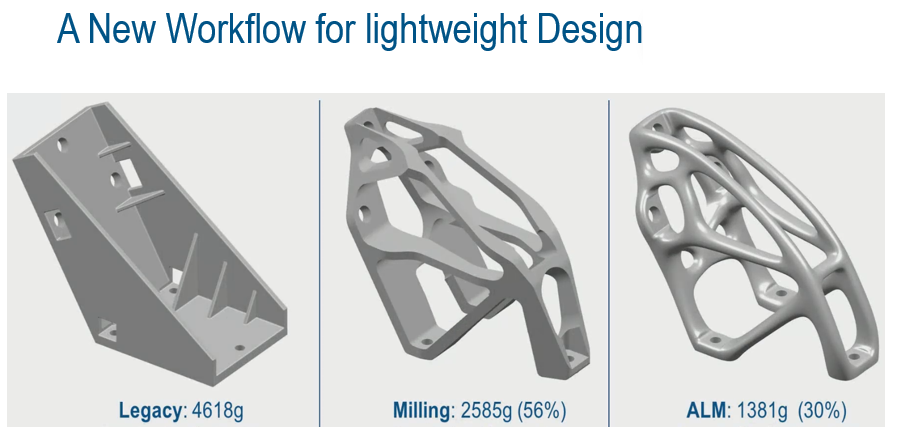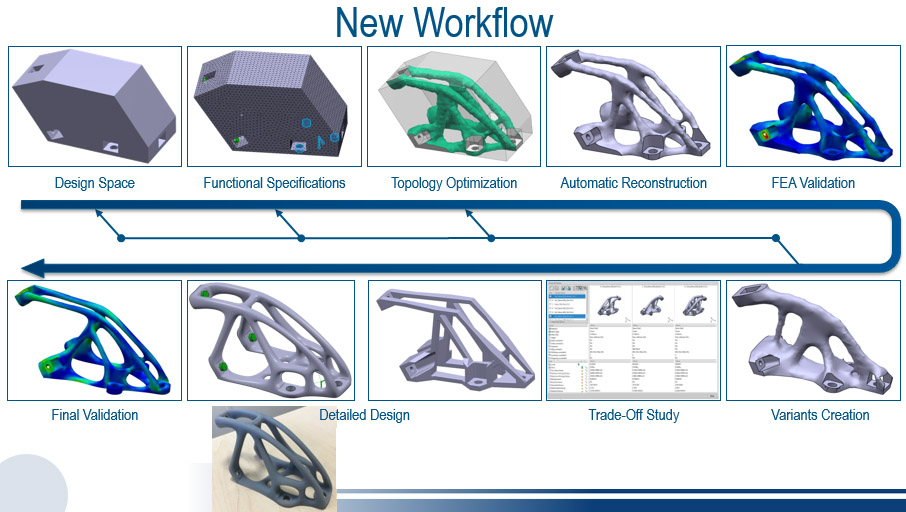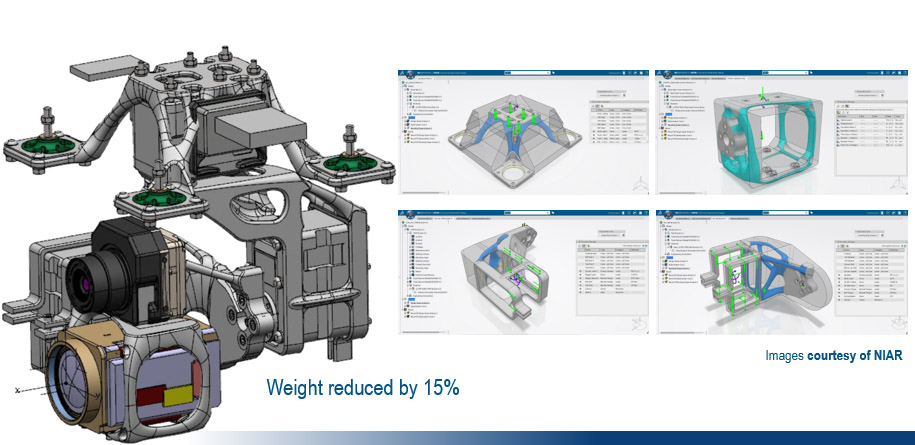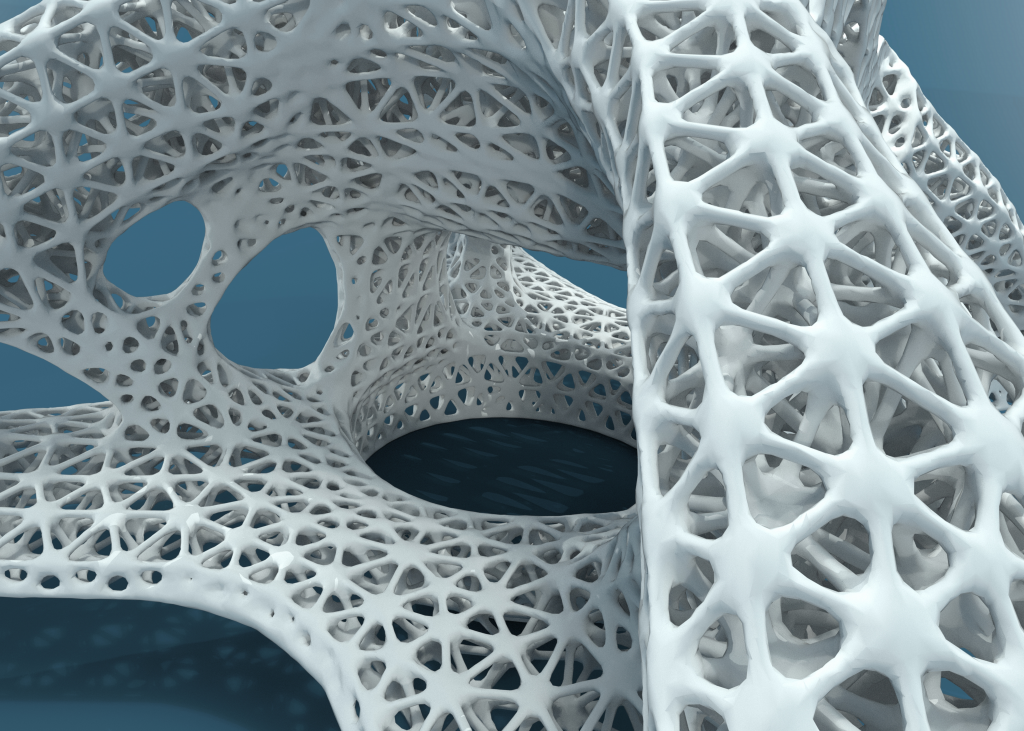For decades, designers have been following traditional design methods that involve lengthy processes and several iterations. But today, the advancements in software have made design process simple and swift while minimizing the costs entailed. Hence, designers skill up on design best practices to reduce the repetitive design work with the help of design templates and easily implement key user-defined features adopting the right tools. This will provide them more time for innovation and new product design rather than repetitive work.
Generative Design is one such system that is transforming the way we design. CATIA software applications creates optimal designs from the set of system design requirements provided. With minimal efforts, engineers can create and simulate thousands of designs in a short span of time.
How to transform the current traditional design into a new generative design?
Simply input your design parameters such as materials, manufacturing methods, size, weight, strength, and cost constraints and receive numerous manufacture-ready designs promptly. Using AI-based algorithms, the Generative Design system outputs a myriad of design options that meet your project goals or specifications. From the multitude of options available, you can choose the one that best meets your requirement.

Why Choose Generative Design?
Generative Design system is an excellent approach that enables designers to explore an array of designs without altering the predetermined design specifications. The simulation is built into the design process, where the design undergoes hundreds of iterations before giving the output. With generative design, focus more on your vision and goals rather than doing manual design iterations. Just give your inputs, find unimaginable shapes that align with your design specifications like weight, stiffness, durability, cost, and material.

New light-weight design and assembly methodologies
Manufacturing engineers are leveraging the generative design to create accessories and tools that are lighter and stronger. They are using it to minimize part weight, optimize material usage, maximize strength, and minimize costs. The largest manufacturing companies like Airbus are utilizing generative design to redesign their interior parts with reduced weight which minimizes fuel consumption and allowing them to save big. Therefore, if you would like to optimize your material usage and reduce weight while maintaining strength and stability then adopt the generative design system to create lighter, stronger, and more cost-efficient outputs.

Check out the workflow of generative design by Dassault Systemes and how different variants are created after multiple processes.

National Institute of Aviation Research (NIAR) at Wichita State University (WSU) collaborated with Dassault Systemes to launch a 3DEXPERIENCE platform to familiarize students with emerging technologies such as Multi-Robotic Advanced Manufacturing (MRAM), additive manufacturing, and the development of new engineered materials for future aviation innovations. The WSU-NIAR designed an unmanned aerial system (UAS) or drone using the Dassault Systemes 3DEXPERIENCE platform. One of the major challenges while designing the product is the weight. The team practiced Generative Design Engineering (GDE) to optimize the UAS Gimbal assembly for the cameras and allows topology optimization and CAD reconstruction on a unified platform. With this, the team was able to reduce the vehicle weight, which added 15 to 30 min of flying per battery charge.

WSU-NIAR also leveraged additive manufacturing combined with GDE to optimize standard parts while reducing the overall part counts, avoiding material wastes, and lowering tooling costs compared to traditional milling methods












